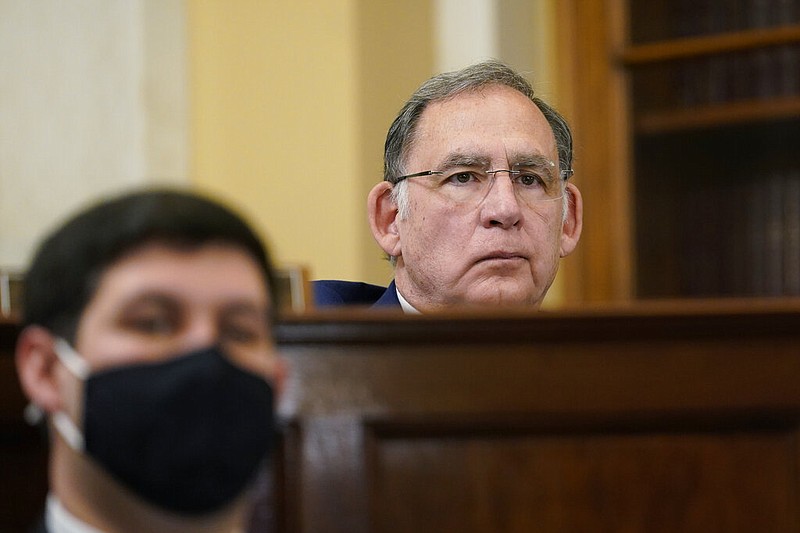WASHINGTON -- A U.S. Senate committee continued its work on the coming farm bill Wednesday by reviewing the impact of conservation and forestry programs under the current law.
The Senate Agriculture, Nutrition and Forestry Committee began its evaluation of the current farm bill in the last Congress with lawmakers eyeing a fall deadline to pass new legislation.
Legislators previously approved a farm bill in December 2018. The current law will expire Sept. 30 unless lawmakers pass an extension if they are unable to finalize new legislative text.
The committee's hearing Wednesday focused on the farm bill's support for conservation and forestry programs. The Congressional Research Service estimates the next farm bill will include at least $57.5 billion for conservation and forestry programs.
"Both of these issues are so important in the Natural State," Sen. John Boozman, R-Ark., the committee's top Republican, said in his opening remarks. "Productive farms and forests benefit wildlife, the environment, the quality of life and the economy of rural Arkansas."
Boozman, of Rogers, noted conservation programs under the current farm bill have been successful because the efforts are "voluntary, incentive-based and locally led." He said if federal officials guided program priorities it could threaten the success of conservation efforts.
"Conservation needs and the needs of our producers are as diverse as the crops they grow and the land that they grow them on. Our programs must reflect this reality and provide the flexibility our farmers and ranchers need," he said. "The prioritization of resource concerns must be left to the local level where producers decide how they can best address their unique and varied landscapes and needs."
Terry Cosby, chief of the federal National Resources Conservation Service, stated in his written testimony the 2018 farm bill "made it clear that voluntary conservation programs are critical to the continued viability of production agriculture" while providing financial and technical assistance opportunities for producers and community leaders.
Conservation funding increased in the last Congress; lawmakers approved more than $17 billion in outlays for conservation programs as part of last August's sweeping Inflation Reduction Act. Cosby told lawmakers his agency is additionally utilizing funding from the 2021 infrastructure law for rehabilitating dams and maintaining watersheds.
Boozman raised concerns about the Inflation Reduction Act's efforts related to climate change and carbon sequestration related to conservation. The law allocated funding for programs addressing natural resource use and environmental concerns like carbon dioxide and greenhouse gas emissions.
"As a result, this limits the ability for many producers in Arkansas to implement conservation practices on their land related to nutrition and water management because that legislation only focuses on climate," he added.
Cosby said producers have opportunities to apply for "everything we have in our portfolio."
"When you look at all of the dollars that the 2018 farm bill provided and also what the IRA provided, we are looking at how do we implement practices on the land and how does that work," he said. "It works very well.
"Those producers out there will have an opportunity to come in and continue to apply for those practices, and the same practices we're talking about that we've been applying for a lot of years also provide those benefits for climate."
Angela Coleman, associate chief of the U.S. Forest Service, discussed her agency, emphasizing its approach to wildfire management. She stated the previous farm bill removed barriers, allowing shared stewardship and management between local stakeholders, landowners and government agencies.
"Each new farm bill has equipped us with essential tools that enable us to tackle the natural resource challenges that we face, strengthen our work with all communities and partners, and equitably serve all Americans," she said.
Coleman's three decades of experience includes work in the Southeast; she noted time spent in the Ouachita National Forest in Arkansas and Oklahoma.
"I've learned forest management and land stewardship from the ground up, and I've witnessed tremendous change over the years," she said. "This includes the helpful changes we have seen in the farm bill with the forestry title."
Wood innovation grants, according to Coleman, are part of the wildfire management strategy. She cited the development of cross-laminated timber at the University of Arkansas and Walmart Inc.'s corporate campus as essential actions in developing materials as well as growing Arkansas' lumber industry.
Cross-laminated timber products consist of multiple layers of wood and provide additional fire resistance and durability against natural disasters.
"Having a healthy timber-producing infrastructure is essential for the agency to be able to accomplish the very ambitious goals that we have set out to improve the resiliency in our forests [and] to protect communities from wildfire threats," Coleman said.
"Our investments in wood innovation are a hallmark of how we need to look at our future. Obviously, Arkansas is out in front when it comes to utilizing mass timber, but the agency through our work in those same private programs has doubled our investments there, and the projects are going up quite a bit."
The committee's previous hearings reviewing the farm bill have focused on the current law's other provisions, including agriculture research, trade and nutrition programs.
